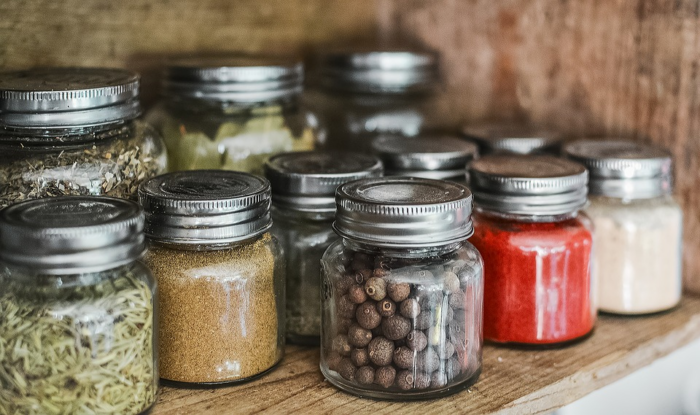The Pros and Cons of Glass as Packaging Material
Glass containers are the oldest and most popular packaging materials that are mostly used for food and beverage products. There are many reasons why they are chosen by packagers, one of which is their aesthetic appeal. Although glass offers a lot of exciting advantages, it is not perfect. So when choosing your primary packaging material, it is helpful to know the pros and cons of glass first.
In this article, we are going to discuss the 6 main advantages and disadvantages of using glass as a packaging material. This will help you in making the right decision for packaging your products.
 Source: Pixabay
Source: Pixabay
Pros of Glass Packaging
Let us begin with the pros of glass containers.
#1 Recyclability
You can fully recycle glass. While plastic packaging can also be recycled, glass is more environmentally-friendly compared to plastic. You can recycle almost all glass containers without losing quality or integrity when repurposed into new items.
On the other hand, plastic containers lose their integrity and strength when they are converted into new materials. Moreover, your consumers can wash, sterilize, and reuse glass bottles and jars repeatedly by themselves. If you haven’t found a glass container manufacturer yet, you can check out Roetell’s glass bottles.
#2 Aesthetic Appeal
Glass provides a distinct feel of luxury to your products which can help you in attracting customers. It often gives out a retro or vintage feeling because it has been used for hundreds of years as a packaging material.
When a consumer grips the cool and smooth surface of a glass container, the feeling will be different when they are holding a plastic container. Glass often gives consumers the feeling of a more pleasurable, classic, and premium experience.
#3 Prolonged Shelf Life
There is a reason why packagers in the food and beverage industry use glass for their products. It keeps the ingredients fresh. Thus, prolonging the product’s shelf life. Glass has a non-toxic and non-porous surface with a high impermeability rate so it will not leach contaminants into the packaged products. This is why glass is an excellent choice for liquid products that will be stored for long time periods such as liquor or wine.
Leaching is possible when you use plastic containers and it can be dangerous to your health. By using glass as your packaging material, you will be able to retain the flavor, carbonation, and scent of your products. Thus, glass is also an excellent choice for soda, seltzer water, perfume, and other similar products.
There are of course other options for great shelf life, and glass is not the only option. Anything made through aluminum machining services is certainly going to work very well and have a similarly long shelf life, so that’s something to consider. But it has to be said that glass is also incredibly effective for this.
Do take note though that a tight seal is also needed to prevent contaminants from entering the package. Product contamination can cause your product to spoil so make sure that you use a dependable glass can sealing machine.
 Source: Pixabay
Source: Pixabay
Cons of Glass Packaging
Now, let us go to the cons of glass packaging.
#1 High Carbon Footprint
The manufacturing process of glass bottles and jars require great amounts of energy and heat. So although you can completely recycle glass, glass manufacturing has a larger carbon footprint compared to plastic. Moreover, when glass materials go to landfills instead, they can take up to 1 million years to decompose.
#2 Shipment Problems
Another downside of glass containers is that they are fragile. If glass containers are accidentally knocked off or have slipped out of your hands, they can easily break and will leave a mess behind. The shards can be life-threatening, especially in manufacturing plants where the lives of your workers can be put to danger.
The same thing applies to the transportation process of products packaged in glass containers. Because glass is delicate, you cannot pack them tightly as you would with aluminum or plastic containers. So fewer items are included on a single shipment when you use glass containers. In addition to this, glass also weighs more compared to aluminum and plastic. Thus, glass containers have much higher shipping costs compared to their counterparts.
#3 Costly to Produce & Transport
For some manufacturers, maintaining the freshness of their products for long periods of time is not very important so they would go for other packaging options. Aside from this, the high cost of using glass as a packaging material may not be practical. This is especially true when there are much more affordable options like plastic.
The increased costs of glass containers are mainly because of the energy required to manufacture them along with their transportation process. Their fragility and weight make them more costly to transport.
Conclusion
So have you decided if glass is the right packaging material for you? Whether you are a retailer or a seller, you have to weigh the pros and cons of glass before choosing it as your packaging material.
Do you focus more on sustainability or on the costs associated with your packaging? Although glass containers are outstanding choices for many retailers and products, this may not be the same for everyone. So if you want a more affordable option, plastic packaging may be ideal for you. Here is another blog you can read about plastic vs glass packaging to help you with your decision.








I am not a retailer but I found this to be interesting to consider as I do try my best to recycle and leave a smaller carbon footprint.